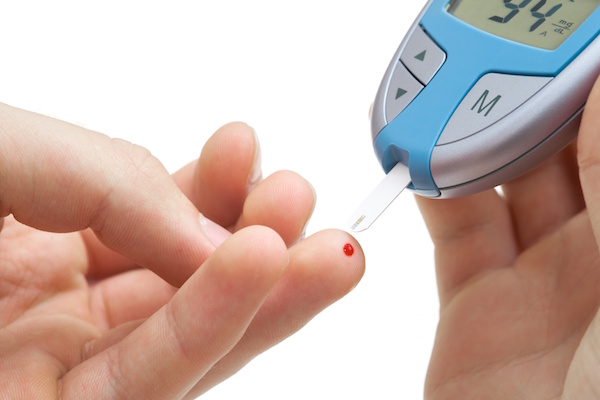
FRIDAY, June 4 (HealthDay News) — In the future, people with diabetes may be able to monitor their blood sugar levels using a glucose “tattoo.”
This new type of continuous glucose monitor relies on fluorescent nanoparticle ink injected under the skin to detect blood sugar levels with a watch-sized or smaller monitor worn over the skin, according to the researchers at the Massachusetts Institute of Technology (MIT) who are developing the new technology.
The glucose “tattoo” ink would be made from carbon nanotubes that can reflect infrared light back through the skin to the monitor, and this new device has the potential to free people with diabetes from having to do numerous finger pricks each day or to change a continuous glucose monitor device every three to seven days to keep track of their blood sugar levels.
“Carbon nanotubes will fluoresce in infrared light, and we can decorate the tubes so they fluoresce in response to glucose,” explained senior researcher Michael Strano, the Charles and Hilda Roddey associate professor of chemical engineering at MIT.
“When you shine a light on the nanotubes, they’ll shine light back at a different wavelength to a watch-type diode that could tell how much glucose is around,” said Strano.
He said that the actual monitor that’s worn over the skin would probably be watch-sized or smaller, depending on the size of the batteries. “If technology keeps shrinking at the current rate, it will probably be smaller than a watch,” he said.
Currently, most people with type 1 diabetes have to prick their fingers up to a dozen times a day to assess their blood sugar levels. The newest technology — continuous glucose monitoring — involves placing a small glucose sensor that’s implanted into the skin, and must be replaced every three to seven days. These devices also must be calibrated daily using a finger stick at least several times a day. The biggest advantage these devices offer is they let someone with diabetes know whether their blood sugar levels are trending up or down.
The reason this is important is that people with type 1 diabetes have to try to maintain as normal blood sugar levels as possible. If blood sugar levels go too low, people with diabetes can go into a coma, and can even die if they don’t do something to raise their blood sugar levels. And, if blood sugar levels are too high, many areas in the body, including the eyes, kidneys and the heart, can be damaged.
“Most of the damage diabetes does occurs over short time periods where glucose is spiking and going out of the normal range. If you could intervene and prevent these spikes, you could mitigate many of the effects of this damaging disease,” said Strano.
Strano said the researchers are currently trying the nanoparticles in animals, and so don’t yet know what side effects or allergic reactions might occur. “We’re proceeding in a cautious way,” he said.
“Everybody is looking for a painless way to monitor blood sugar, and this technology sounds good, but I have no idea if it’s going to work or not. From here to reality will take a lot of steps and research,” said Dr. Joel Zonszein, director of the clinical diabetes center at Montefiore Medical Center in New York City.
Plus, he said, there’s always the possibility of an adverse reaction to anything placed inside the body. “Our cells don’t like foreign bodies. Already, immune cells very carefully try to reject the continuous glucose monitor sensor and fibrose [form scar tissue] around it,” he said.
More information
To learn more about the current advances in continuous glucose monitoring, visit the U.S. National Institute of Diabetes and Digestive and Kidney Diseases.

